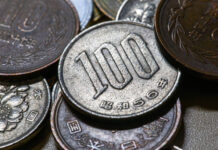Markets
The dollar taking a breather against the likes of the yen and the yuan this morning helped to smoothen global sentiment even as the move was mainly inspired by potential action of the respective central banks (BOJ, PBOC) to prevent a further decline of their currencies, rather than a ‘natural risk-on’ correction of the dollar. Admittedly, optimists also saw better Chinese lending data as a tentative sign that the economy might be nearing a bottom. Whatever the driver, the EurosStoxx 50 at some point gained about 1.0%, but there was too little news to support follow-through gains (currently +0.5%). The S&P 500 opened 0.5 % higher. In its summer forecast update, the European Commission as expected downwardly revised its 2023 (0.8% from 1.1%) and to 2024 (1.3% from 1.6%) growth forecasts as consumption is still held back by the ongoing increase in prices for most goods and services even as the labour market stays strong. The EC slightly reduced the EMU 2023 inflation forecast from 6.7% in the spring update to currently 6.5%. However, a sustained return of inflation to the 2.0% ECB target isn’t in the cards yet with the 2024 outlook put slightly higher at 3.2% (from 3.1% ). The trends of the EC forecast didn’t come as a big surprise and had limited impact on markets. In a tentatively steepening move, German yields add between 1.0 bp (2-y) and 4.5 bps (30-y). The US curve show a similar move with the 2-y little changed but the 30-y gaining 4.7 bps. For now, the downside in oil looks well protected. Any attempt of Brent to return below $90 p/b is still met by a solid bid.
As indicated, a CB-driven decline in USD/JPY (currently 146.50) and USD/CNY (currently 7.294 compared to 7.344 on Friday) also weighed on the dollar overall. DXY dropped back below the 105 handle (104.67). EUR/USD tries to hold north of 1.07(3). However, from a technical point of view, the USD uptrend remains intact. A mild risk-on today favours sterling against the euro with EUR/GBP drifting back to then 0.8560 area. UK labour data to be published tomorrow morning are the next point of reference for the BoE (and for markets).
News & Views
Norwegian inflation unexpectedly decelerated in August. Prices fell -0.8 m/m, bringing the headline y/y figure from 5.4% to 4.8% and defying expectations for a status quo. A core gauge adjusted for tax changes and excluding energy products dropped 0.6% m/m. The yearly figure eased from 6.4% to 6.3% while consensus anticipated a further rise to 6.6%. Furnishings, household equipment & routine maintenance (-3.2%) as well as housing, water and other utilities (-1.3%) registered the biggest monthly declines. The Norwegian krone briefly dipped following the release before paring losses back to EUR/NOK 11.42. That’s about the same low (NOK) level when the Norges Bank lifted rates in August to 4%. The central bank then said it “The future policy rate path will depend on economic developments. If the economy evolves as currently anticipated, the policy rate will be raised further in September”. Inflation has undershot June expectations but hangs in the balance with the ongoing weak Norwegian krone. A final September hike to 4.25% is therefore still likely.
August Inflation in the Czech Republic came in close to expectations with prices pressures easing to 8.5% (from 8.8%) on a 0.2% monthly pace. Housing, water, energy & fuel (0.3%), transport (1.7%) and especially domestic fuels (7.7%) were among the strongest drivers on a monthly basis. The Czech National Bank said today’s numbers were in line with the summer forecast made in August. Core inflation even came in slightly below expectations, at 6% vs a 6.2% estimate. The ongoing decline in the latter reflects “a fading of growth in prices of foreign inputs and a cooling of domestic demand.” The CNB expects yearly inflation to ease further in September before temporarily halting this trend in October due to statistical base effects. Inflation should be close to the 2% target early next year, it concluded. The Czech crown reacted stoic on the publication at first before extending a losing streak. The CNB’s statement added to the losses, with the CZK probably eying the core inflation miss. EUR/CZK rallies from 24.37 at the open to 24.53 currently. The CZK came in markets’ crosshair after the NBP shocked with a 75 bps rate cut last week, sending shockwaves through regional markets outside Poland too. The numbers today add fuel to the fire, even as governors (eg. deputy governor Zamrazilova) already said the CNB won’t be hasty in cutting rates. Czech swap rates tumble by double digits at the front end of the curve. More than 50 bps of cuts are priced in by year’s end.











